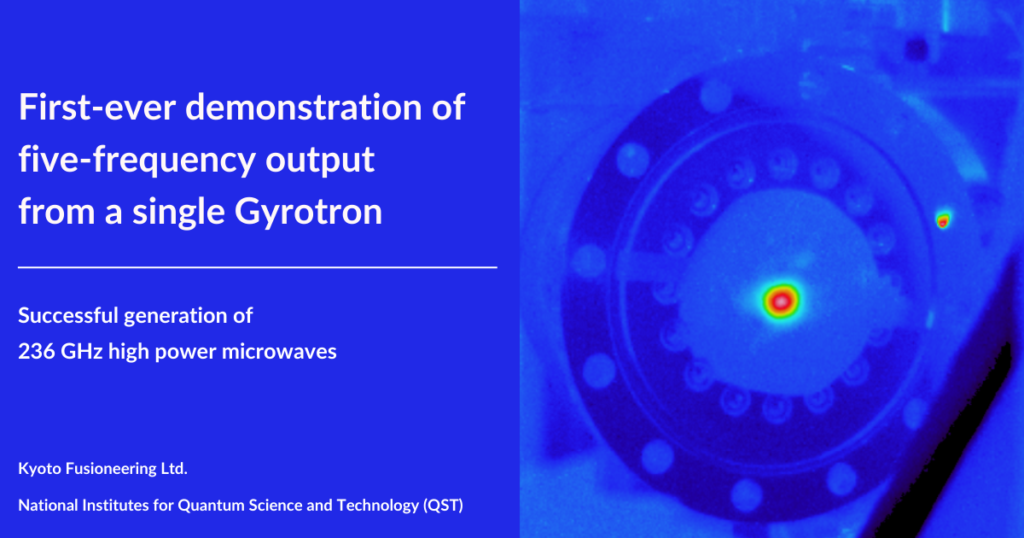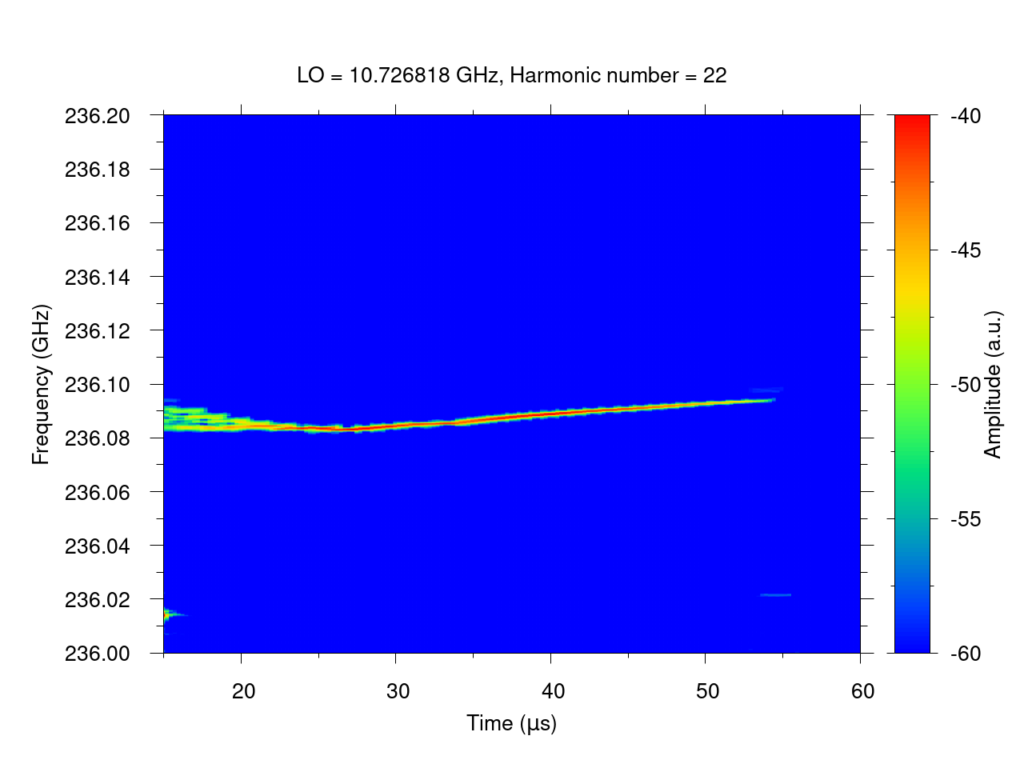– 236 GHz high power microwaves applicable for DEMO plants using the Gyrotron plasma heating system –
Kyoto Fusioneering (KF) and the National Institutes for Quantum Science and Technology (QST) have successfully demonstrated that their gyrotron, a plasma heating system that is a core component of a fusion plant, has generated 236 GHz high-power microwaves, bringing the reality of fusion energy one step closer.
This gyrotron is based on the 104 GHz, 137 GHz, 170 GHz and 203 GHz gyrotrons developed by QST, in conjunction with a 9.5 T high field generating superconducting coil newly developed by KF with a magnetic field design to enable oscillation at a new 236 GHz. The fifth frequency, 236 GHz, is applicable for fusion cores with higher magnetic fields than ITER, like the DEMO plant, a key facility in shifting from research-driven to industry-driven fusion technology development, and future commercial fusion power plants, when they become operational. This achievement is expected to significantly contribute to practical applications for fusion energy, leading to a key solution for increasingly challenging global environmental and energy issues.

Gyrotrons are the heating systems that create the plasma conditions necessary for fusion reactions to occur in magnetic confinement cores. The joint research between QST and KF has demonstrated that existing gyrotrons, through R&D, can be modified to produce higher frequency gyrotrons. KF is developing this technology as part of a larger systems package for the fusion industry as a whole so that it can be used by research institutes, start-up companies and other fusion industry players around the world.
So far, four frequencies (104 GHz, 137 GHz, 170 GHz and 203 GHz) have been successfully oscillated by a single gyrotron at QST, based on the 170 GHz gyrotron developed for ITER. Through the joint R&D efforts, a new 236 GHz RF beam (pulse width 30 µs) has been produced, paving the way for the world’s first practical use of five separate frequencies. When heating fusion plasma, the stronger the magnetic field for the plasma confinement is, the higher the frequency microwaves need to be. This achievement opens up new possibilities for the design of compact fusion plants that use high magnetic fields with high-temperature superconducting (HTS) magnets.

KF Board Member and CTO Keishi Sakamoto noted: “We have been able to successfully produce a high-frequency beam of 236 GHz and achieve the world’s first five-frequency oscillation with a single gyrotron thanks to all the researchers who have been involved in gyrotron development for many years, including QST, the manufacturers of the many devices and components that make up a gyrotron, and KF’s technical team. We are delighted to have reached this milestone, which will make a significant contribution to the practical application of fusion energy. We will continue our efforts to improve the performance of the Japanese gyrotron and make it available to the overall fusion sector.
Canon Electron Tube Devices Inc. manufactured the gyrotron and Japan Superconductor Technology Corporation (JASTEC) manufactured the superconducting coils, while KF’s experiments were carried out in cooperation with Kansai Electric Power to develop the gyrotron. The results once again highlight how Japan’s advanced technology will play a pivotal role in the practical application of fusion energy.
Based on this achievement, KF will continue to promote the development of long-pulse operation going forward, while optimising output and verifying oscillation efficiency.




